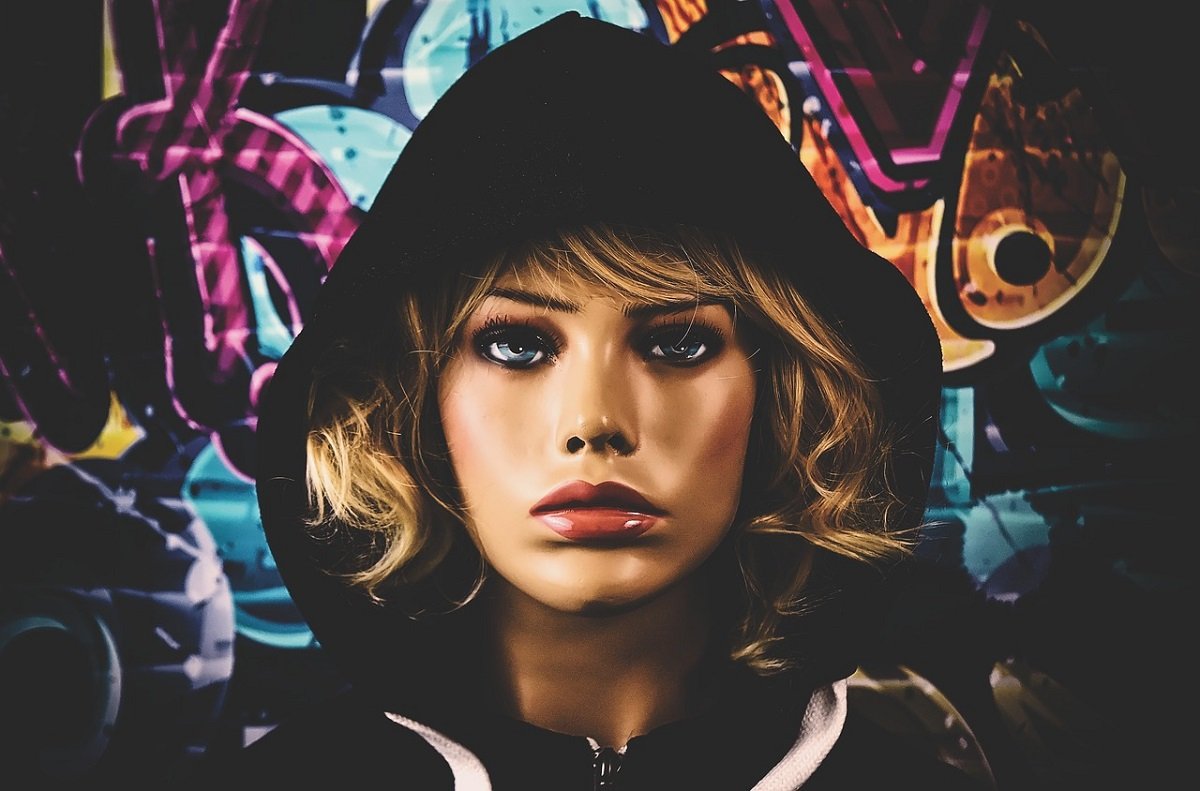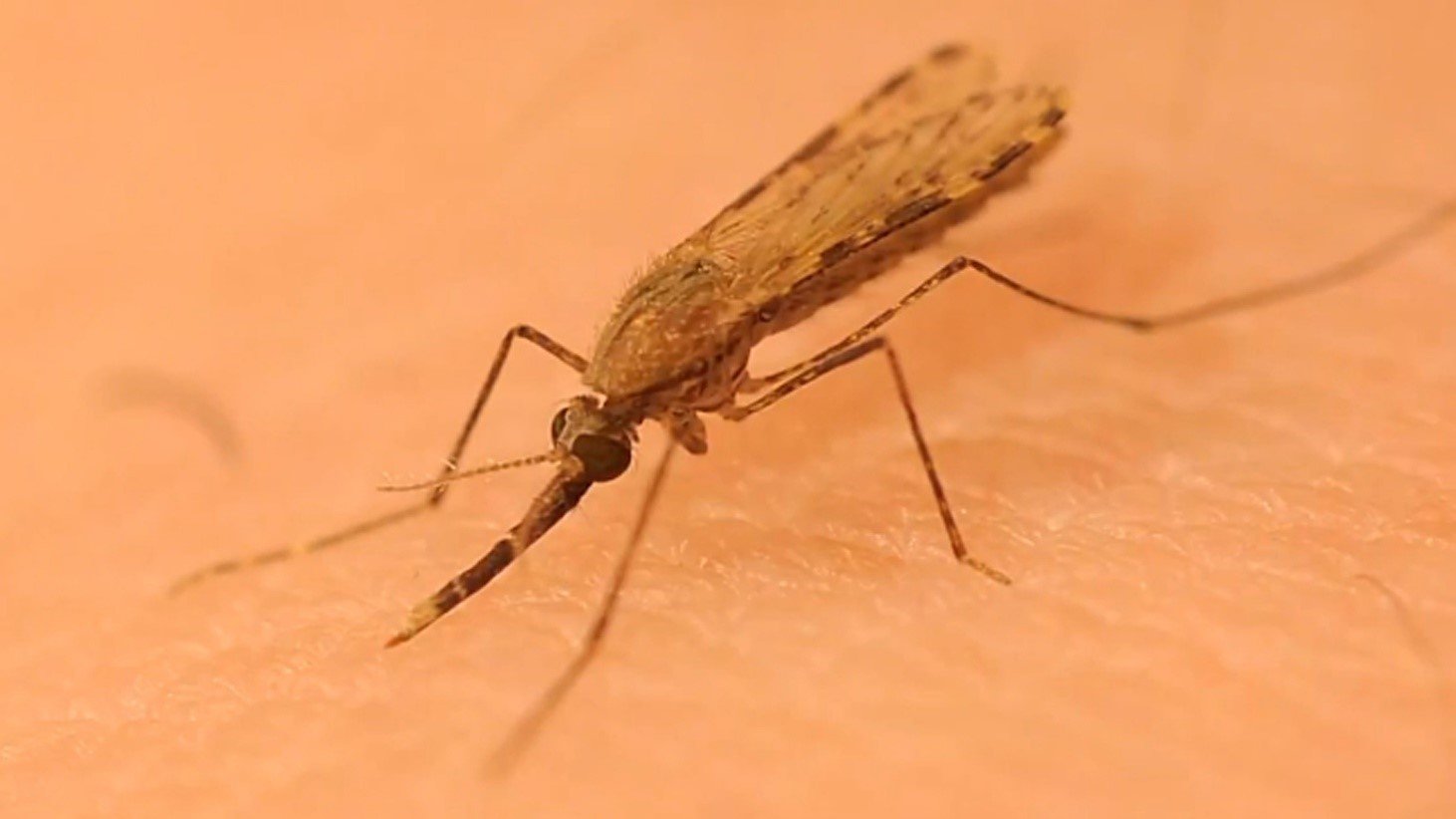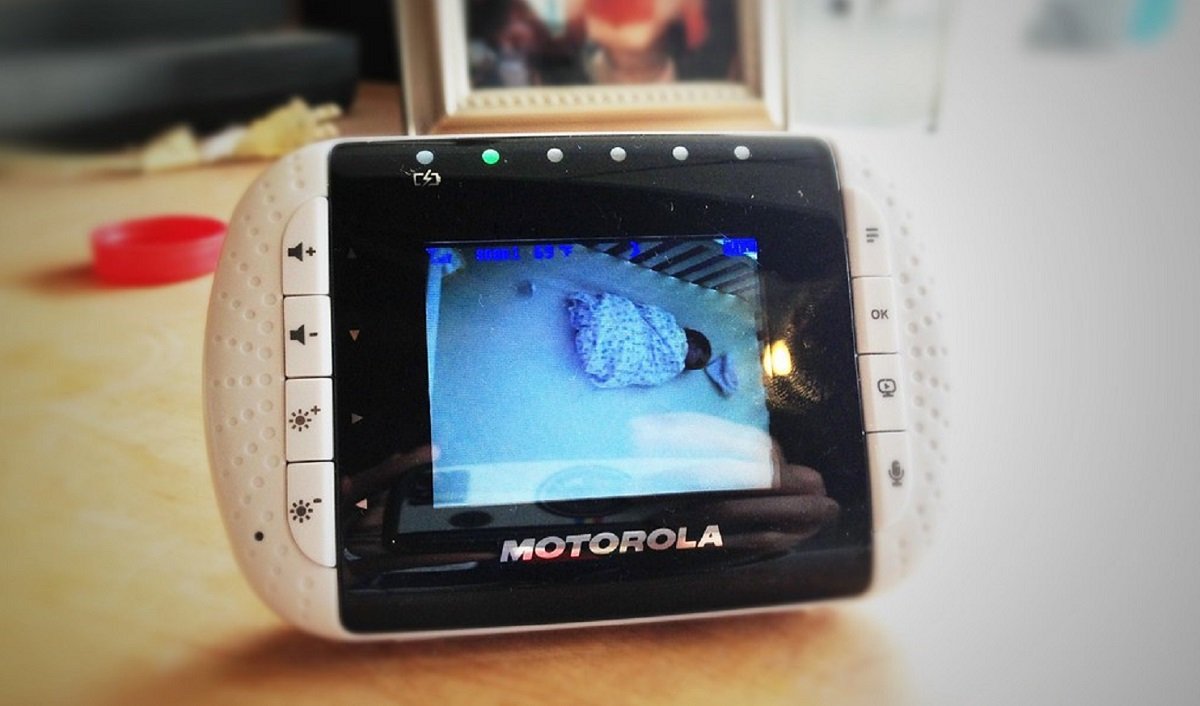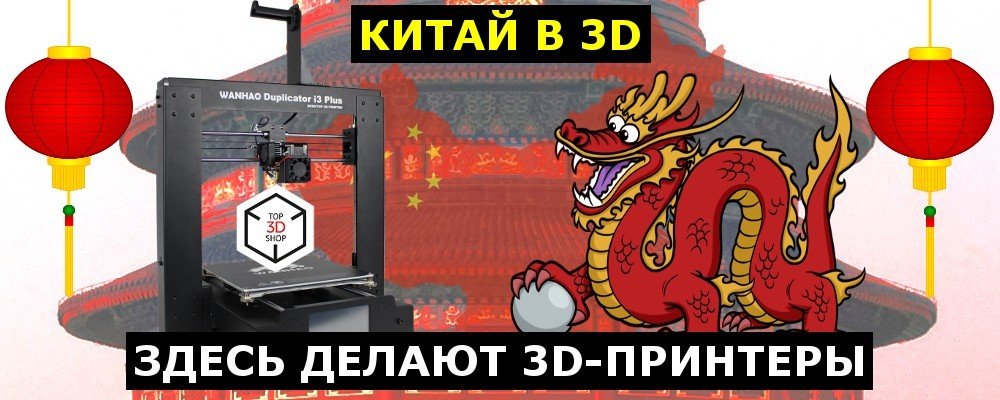
At the end of March, we went to China, pursuing two main goals: visiting our main suppliers of 3D equipment, Concentrated in Shanghai and its suburbs, as well as the study of a new direction in CNC machines and the search for direct manufacturers-suppliers at the exhibition CHCMT 2017.
From this note you will learn about the first part of the trip – a visit to our suppliers of 3D equipment.
After one day of adaptation in a fairly comfortable and modern metropolis, which is now Shanghai, we went to the office of RAISE 3D. Their office is located in a new respectable array of buildings, not far from the center, but in this area there is already something that vaguely resembles the industrial zone.
After getting acquainted with the director for Sales, and after completing the mutual presentation of our companies, we learned that RAISE is experiencing an explosive growth in sales – production is struggling with shipments of more than 500 cars per month. Then we were invited to the showroom, where we were met by a solid astronaut more than two meters high, hinting at the fact that large format and stable printing is a business card of RAISE printers.
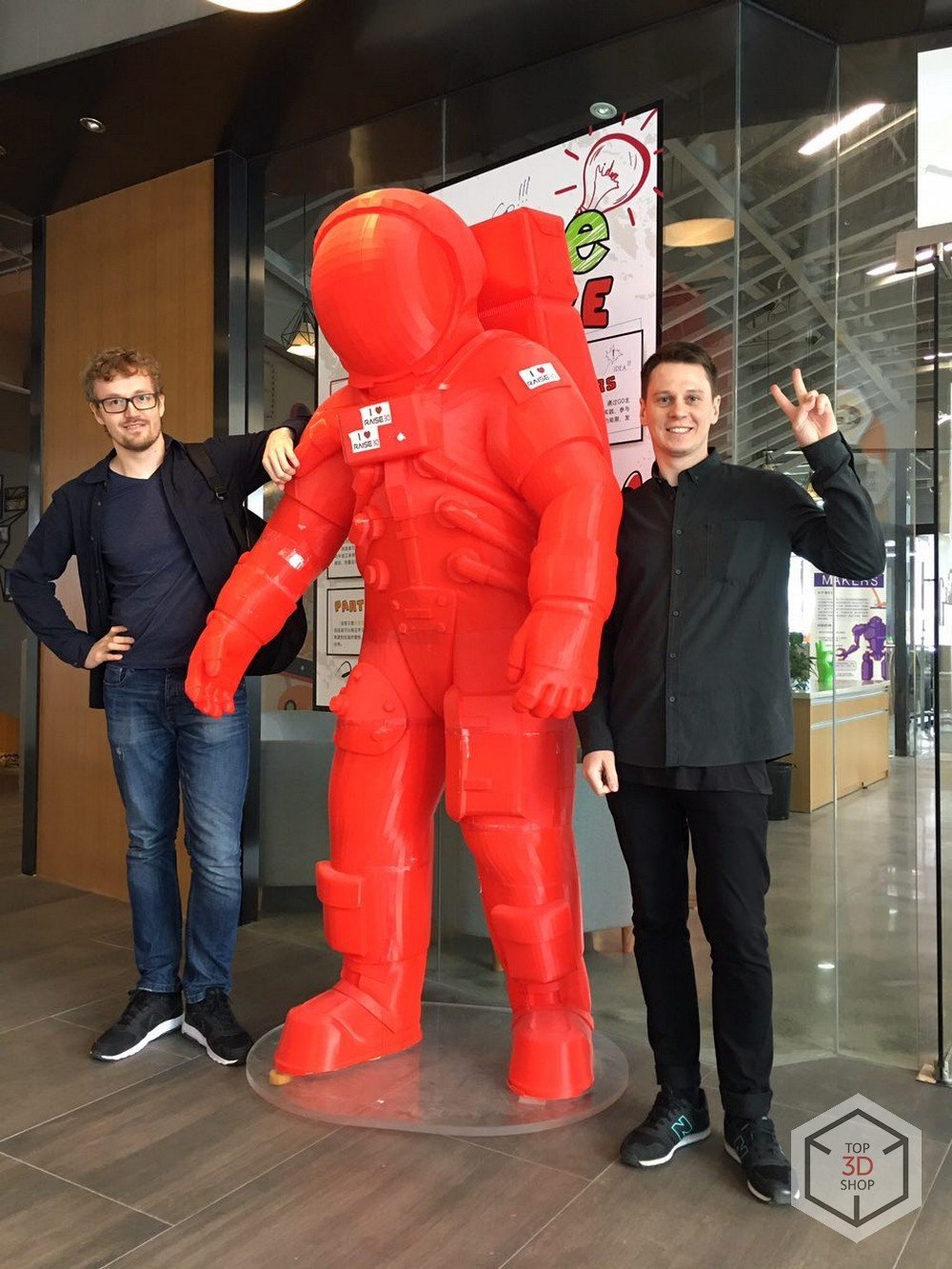
Here we got to know more about the 2-extruder modification of N2 Plus.

The two-material seal has small blotches, but for a simple design with two extruders, the result is quite good.
] 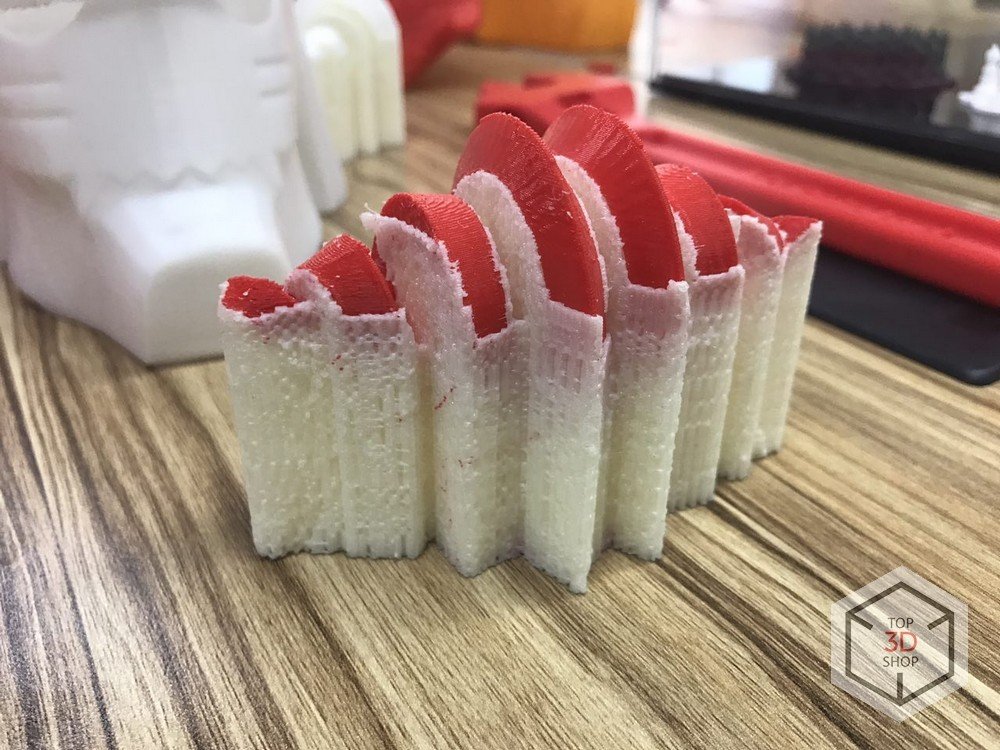
The issue of the expediency of FDM-printing with a layer thickness of 50 μm and less, spent and her time and receive an always controversial. Nevertheless, all the printouts presented were of high quality and smooth surface.


] 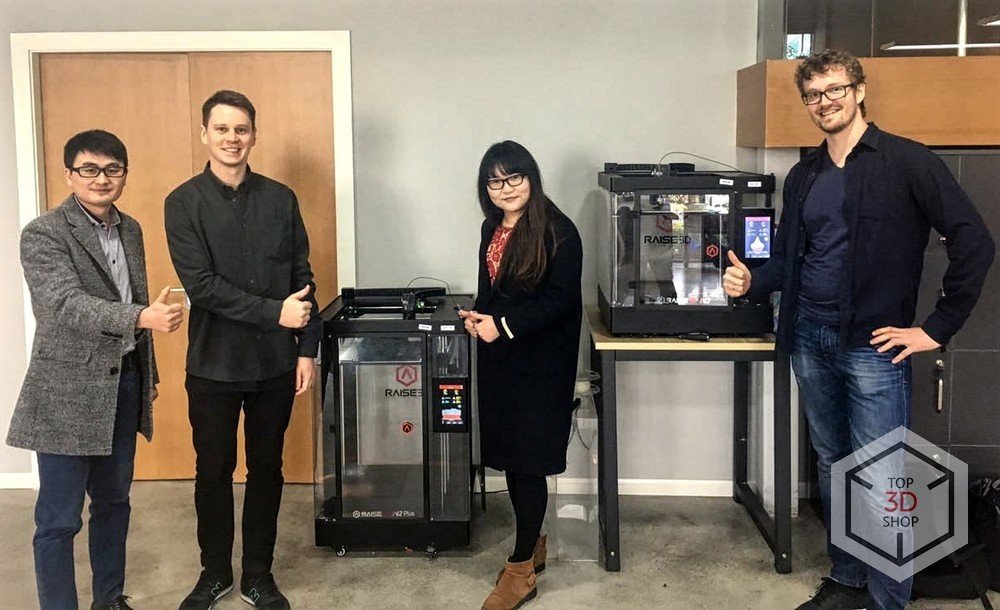
We came to the conclusion that RAISE 3D printers have a sufficient list of properties attractive to a wide range of users:
- Huge print area: up to 305 x 305 x 610 mm
- High quality print, with a layer thickness of up to 10μm
- The possibility of printing two materials
- Quality assembly and convenient touch screen
- A very democratic price
Next we went to the Mankati office located already far away from the center of Shanghai. We do not sell their printers often, but the announcement of the new model and the location convenient for us unequivocally determined what to look for.
Mankati
It was difficult to assess the company itself, It is in the process of moving – in most rooms reigns corresponding disorder. In the room where we were invited there was an assembly shop where two workers were assembling a new model E180 :
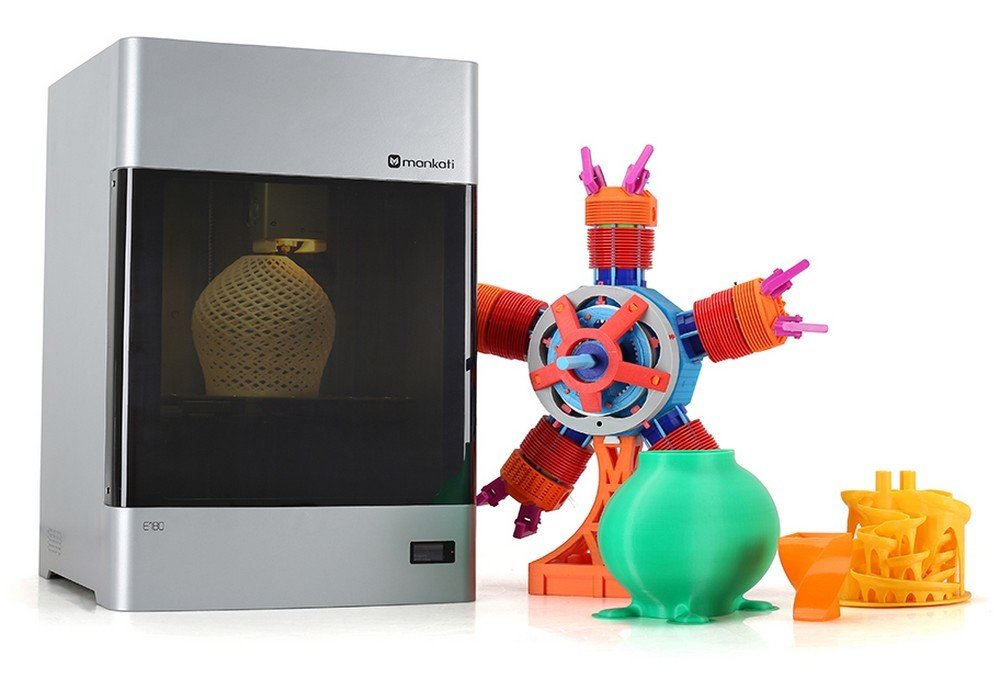
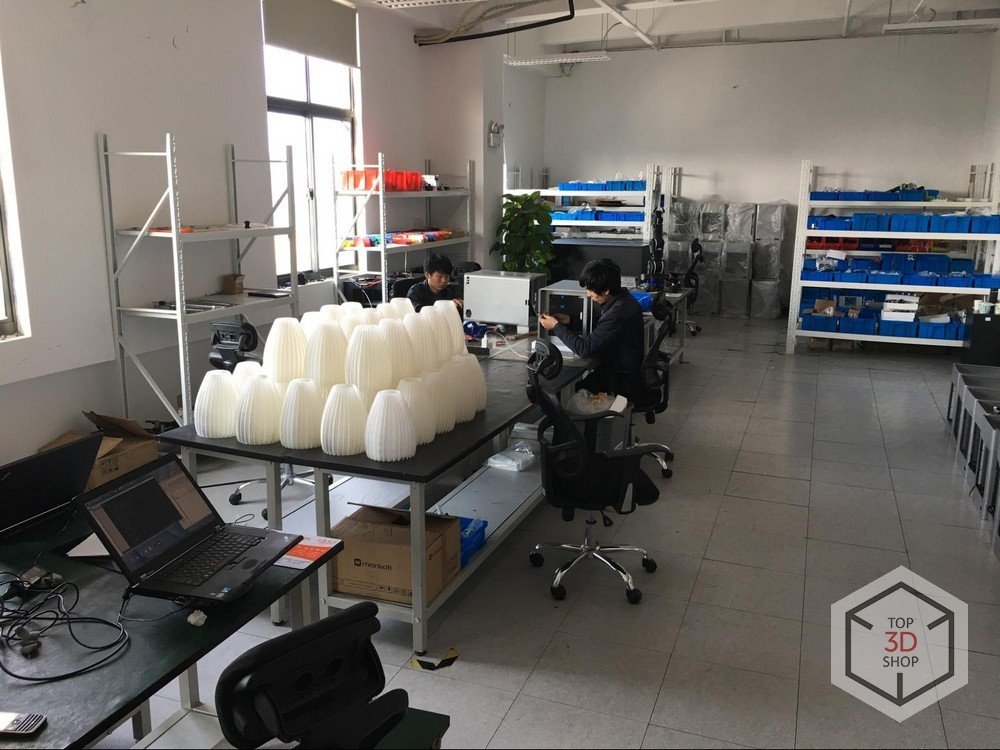
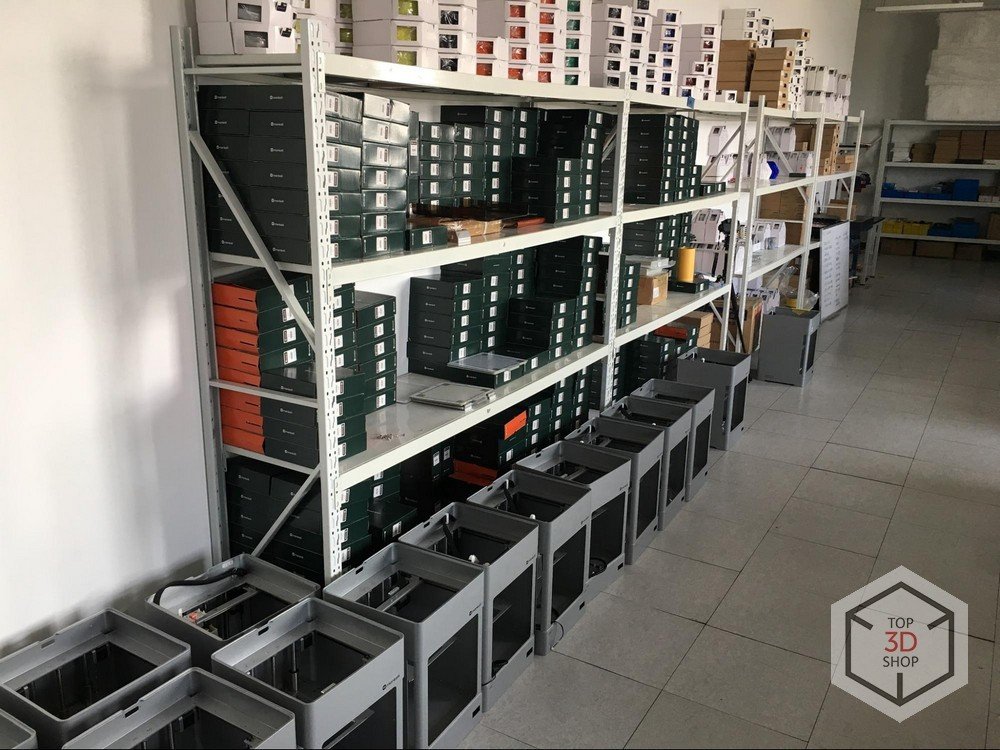
Of the main advantages of the Mankati E180 listed on their website:
- Connecting with Ethernet and WiFi
- Air filter for air filtration from the chamber (this is very actual in China)
- Camera for monitoring the printing process
- Material flow sensor, for the possibility of refueling the rod
- High temperature of hot-end, table and chamber: 350 ° C, 110 ° C and 60 ° C for engineering materials
- High quality printing
- Rail guides
We were very interested in the possibility of printing with various materials, including PEEK, but the representative of Mankati, citing the high cost of the material itself, could not show us any samples.
A very small screen with an inconvenient location, with even smaller ones Letters on it, push-button control from the side, and also a USB port, generally located on the rear panel – our engineers would obviously not be delighted with this decision, since they have to repeatedly print new files during the working day. Maybe next time we had to go to the neighboring city of Hangzhou, which is 200 kilometers from Shanghai. We easily crossed this distance on one of the high-speed trains that develop speeds of up to 350 km / h, the network of lines of which exceeds the length of similar lines throughout Europe and Japan together.
Shining 3D
In Hangzhou, at the station, we were met by Cyril Xia – manager of Shining 3D responsible for sales in Russia. Together with him we went to their office, which is a large separate building. We did not remove the building from the outside, but, so that you can imagine the scale, I offer several photos of the reception, as well as lounges with a volleyball court and a huge terrace:
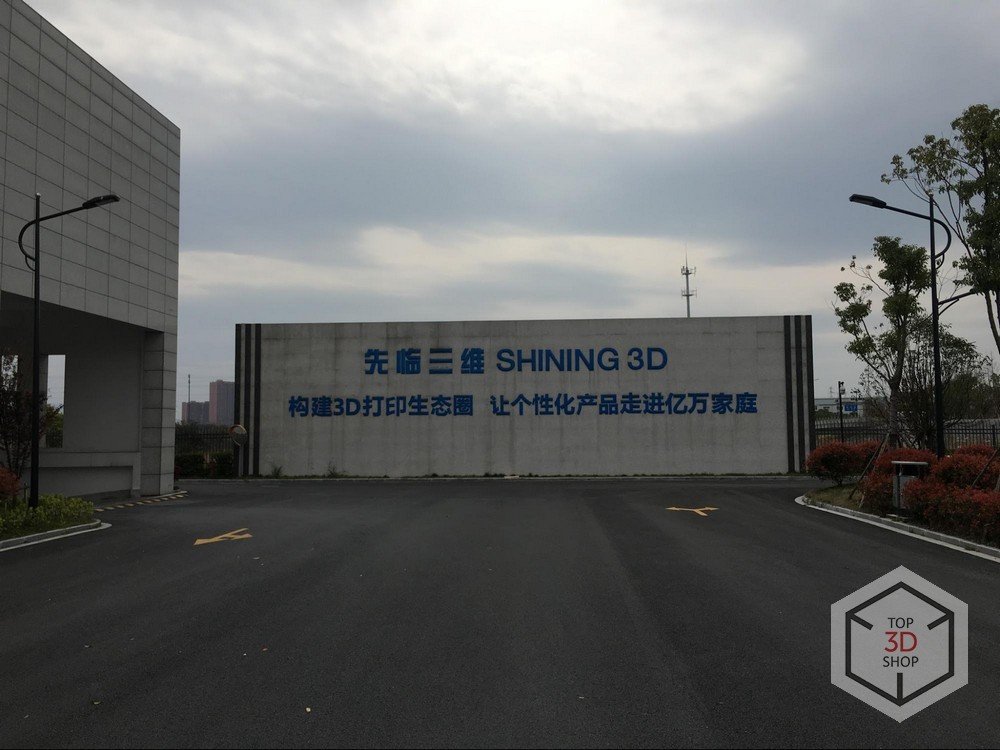
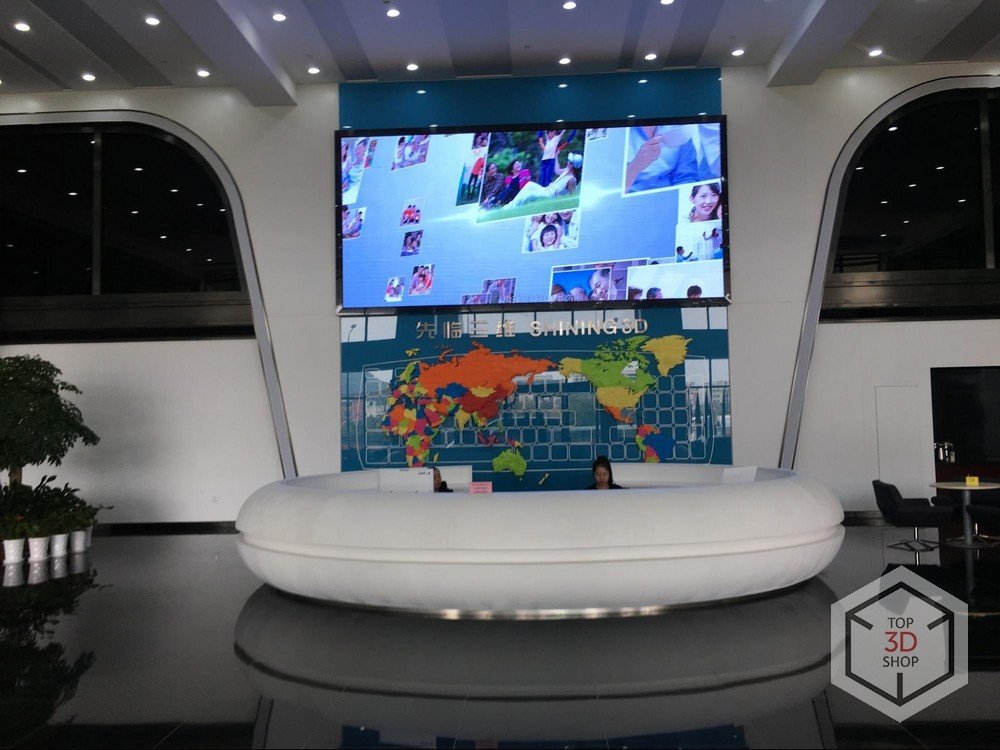

In the building also There are a lot of spacious showrooms, separate rooms for developers of various equipment, sales departments and working areas of other employees.
After a hearty lunch from corporate chefs, we went on a tour of the office.
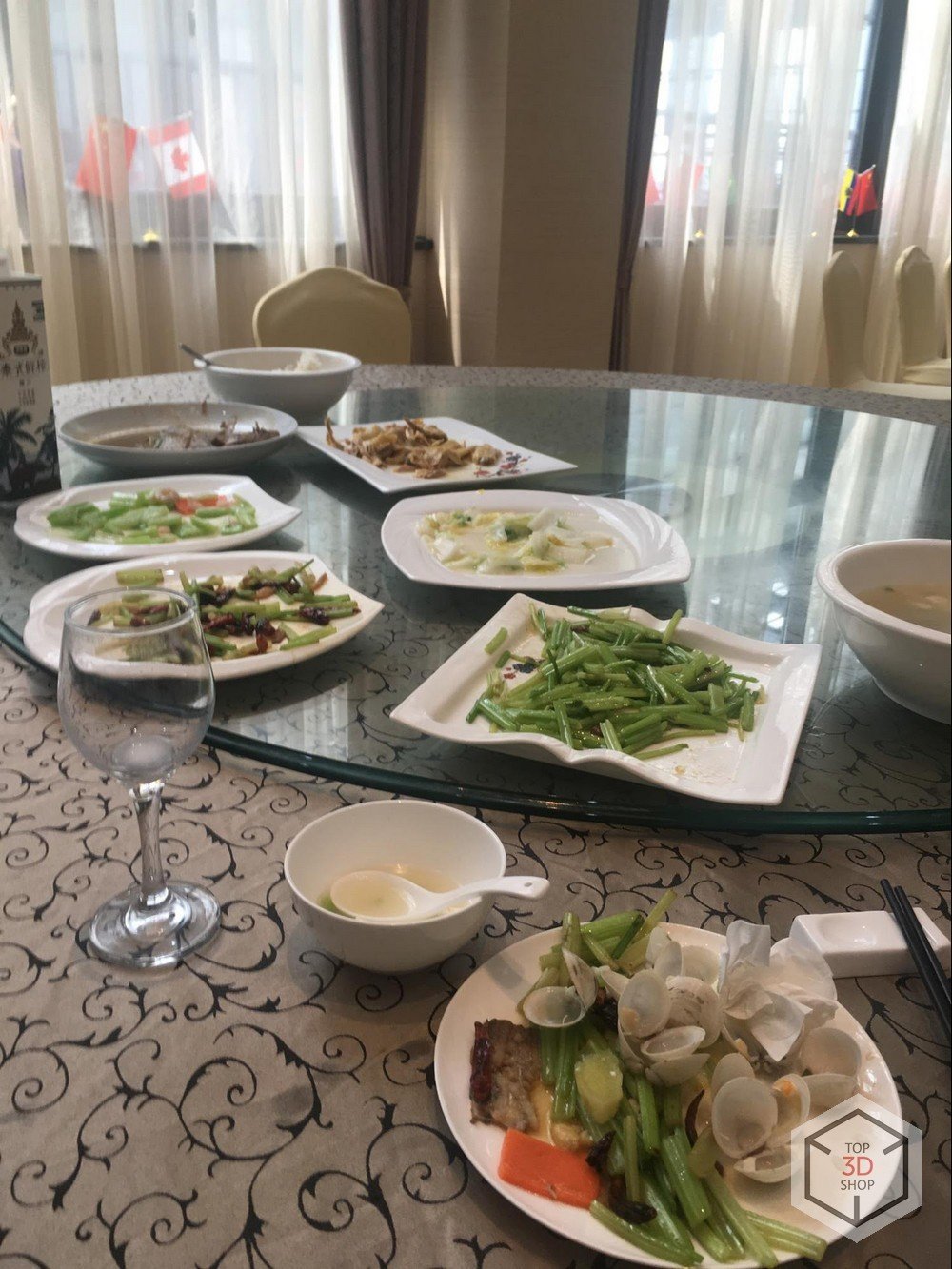
First we were shown the classes in which the training seminars and practical classes for schoolchildren are conducted – so the company contributes to modern education and promotes 3D technologies in China.

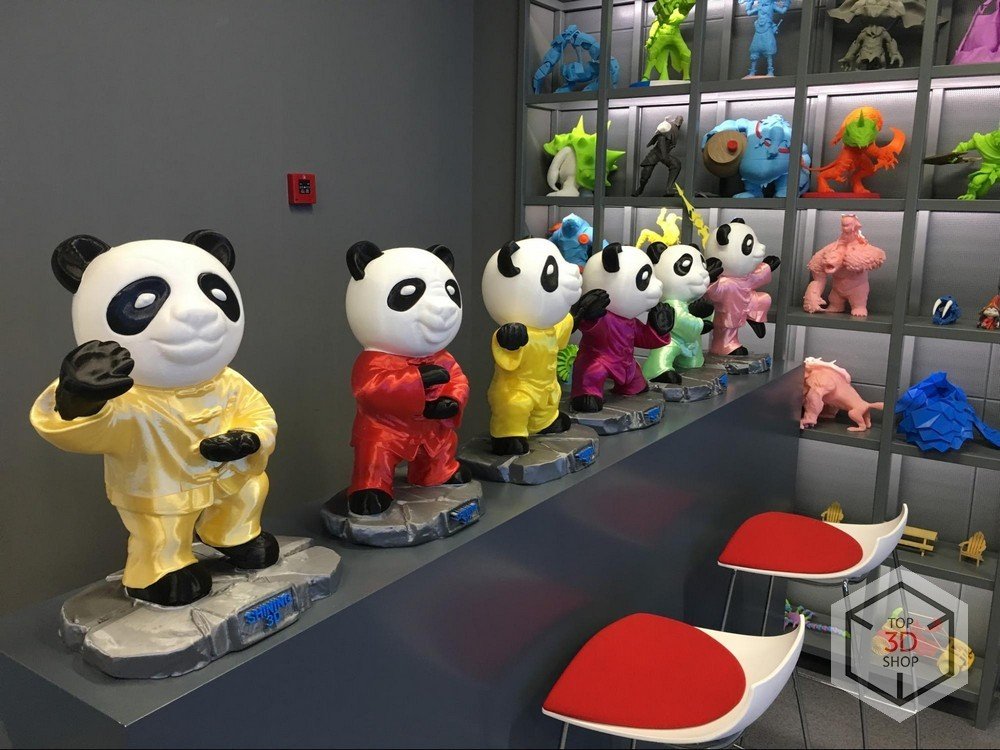
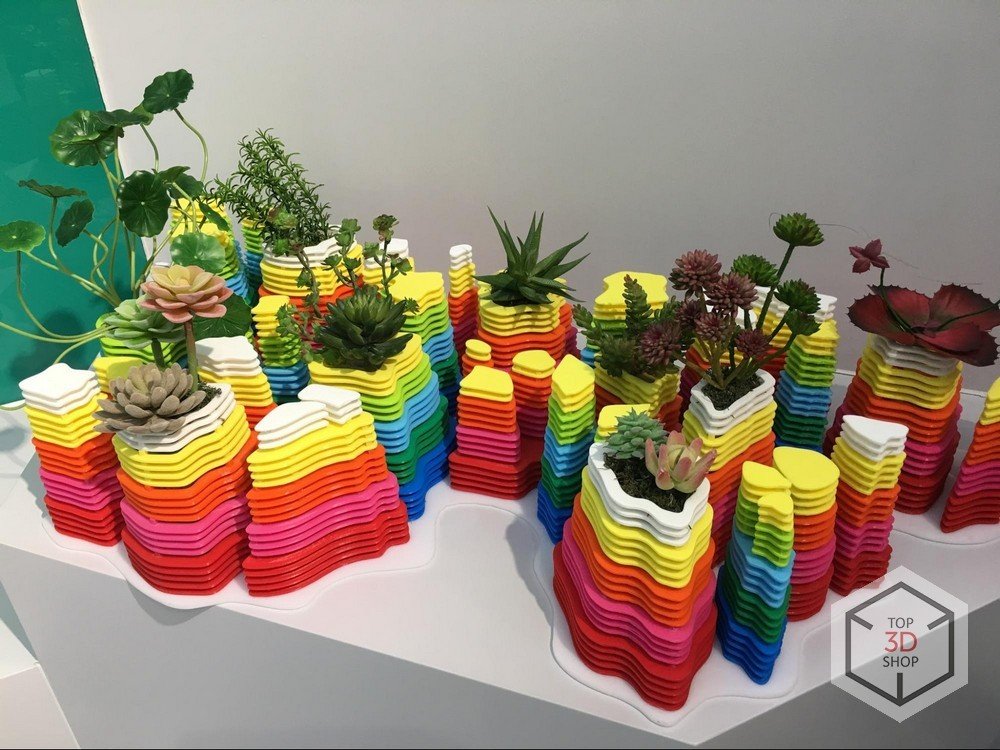
There are a lot of beautiful figures of various superheroes and animals in classes. I would like to catch the company using other manufacturers’ printers, but all models were glued from parts of the smallest working chamber size of their small Einstart-S .
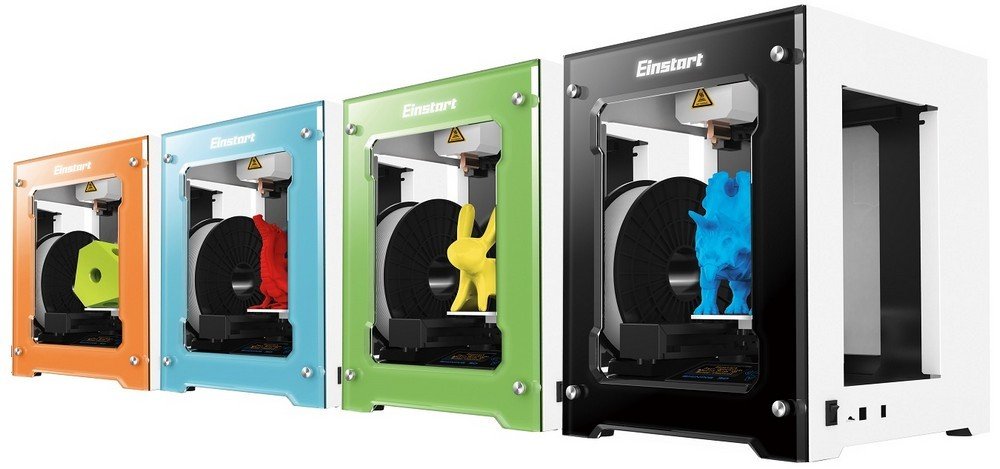
Running a little forward, I will show how this is all printed in their production:
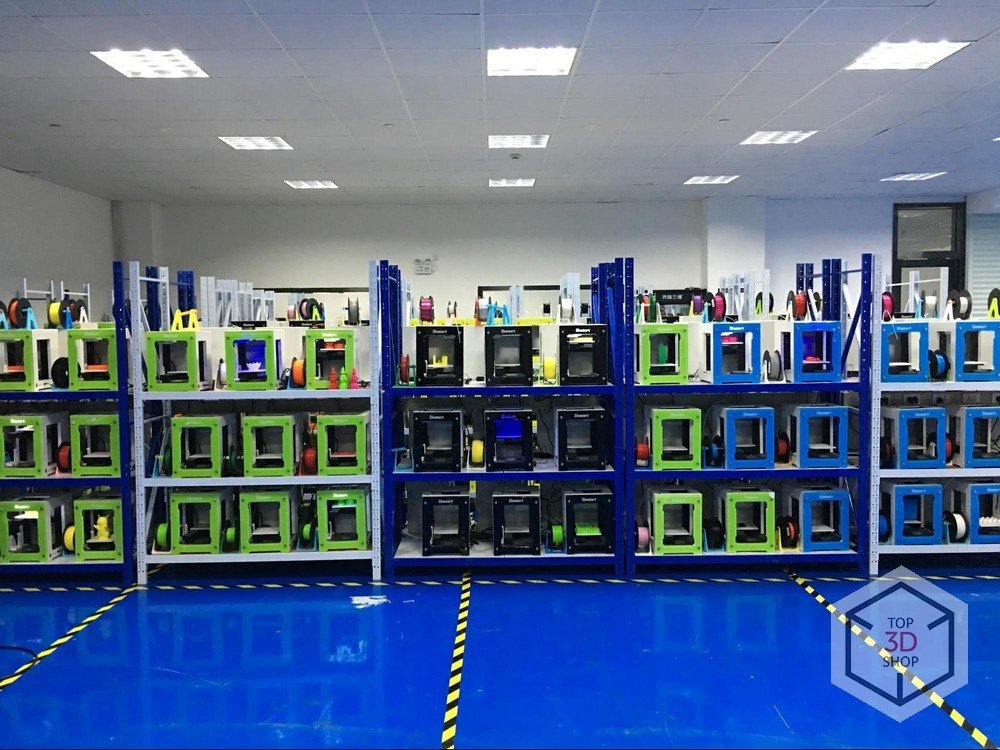
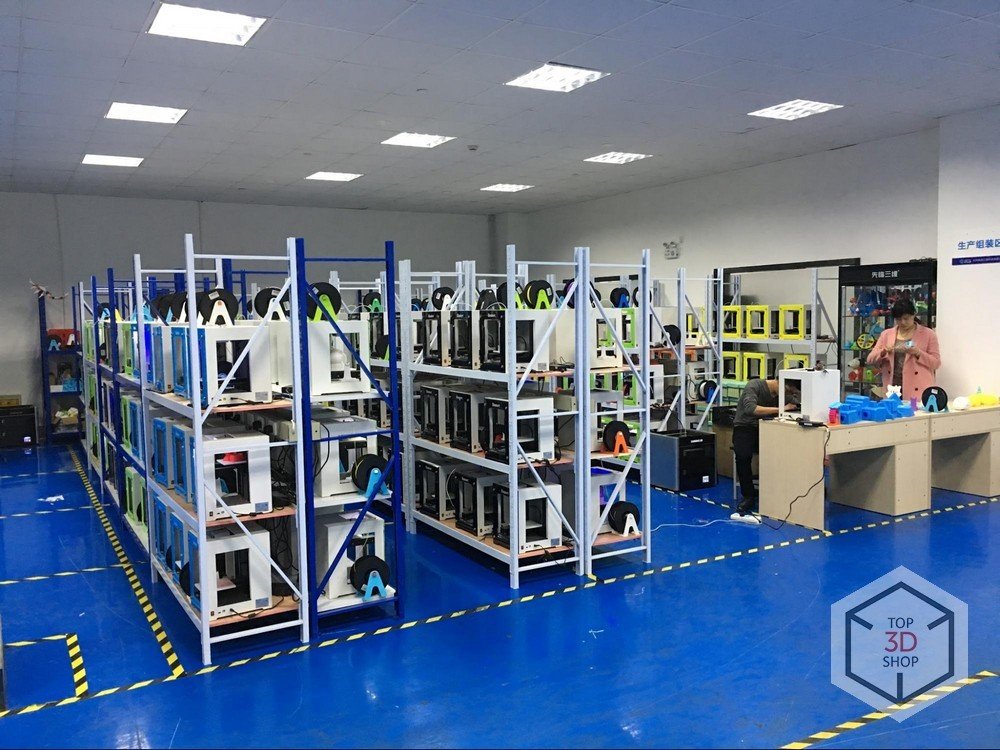
]
After the student classes we went to the medical show-room, Shining 3D’s capabilities in this field, such as SLA printing of dental models and articulators, biocompatible surgical templates (materials from Somos and NextDent ), printing of metal crowns and surgical prostheses
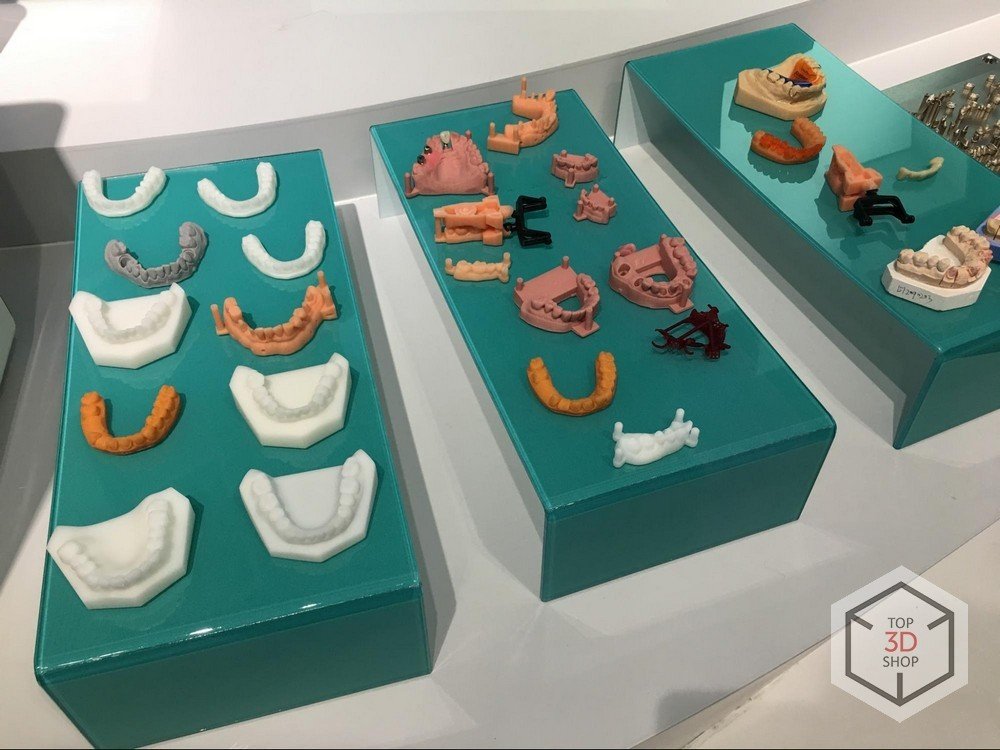 ]
]
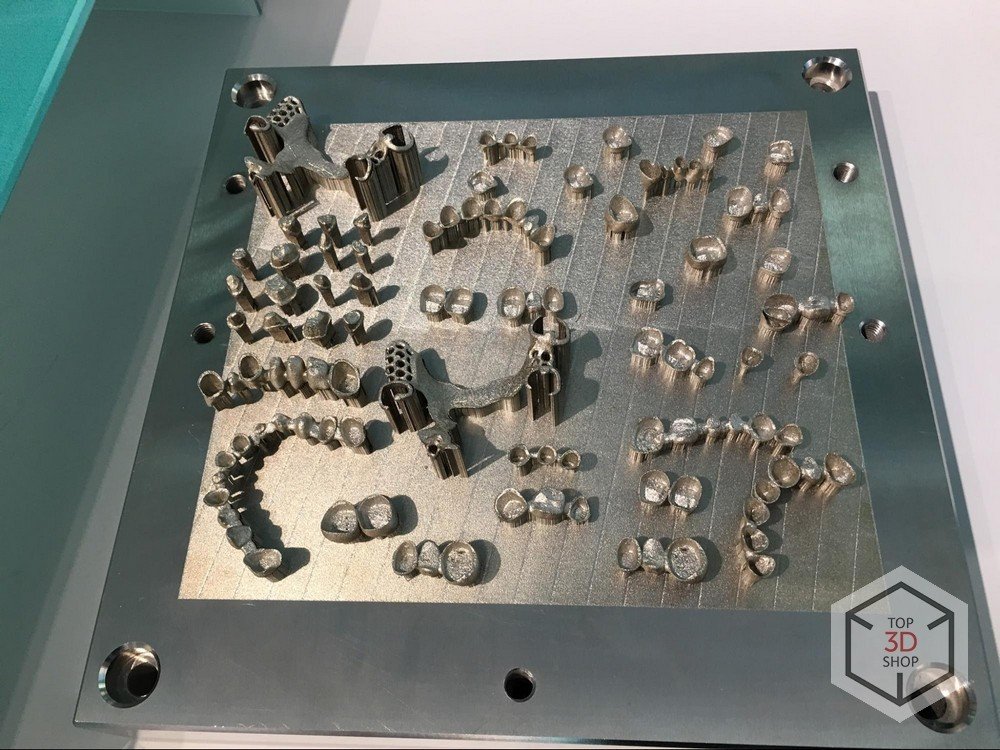
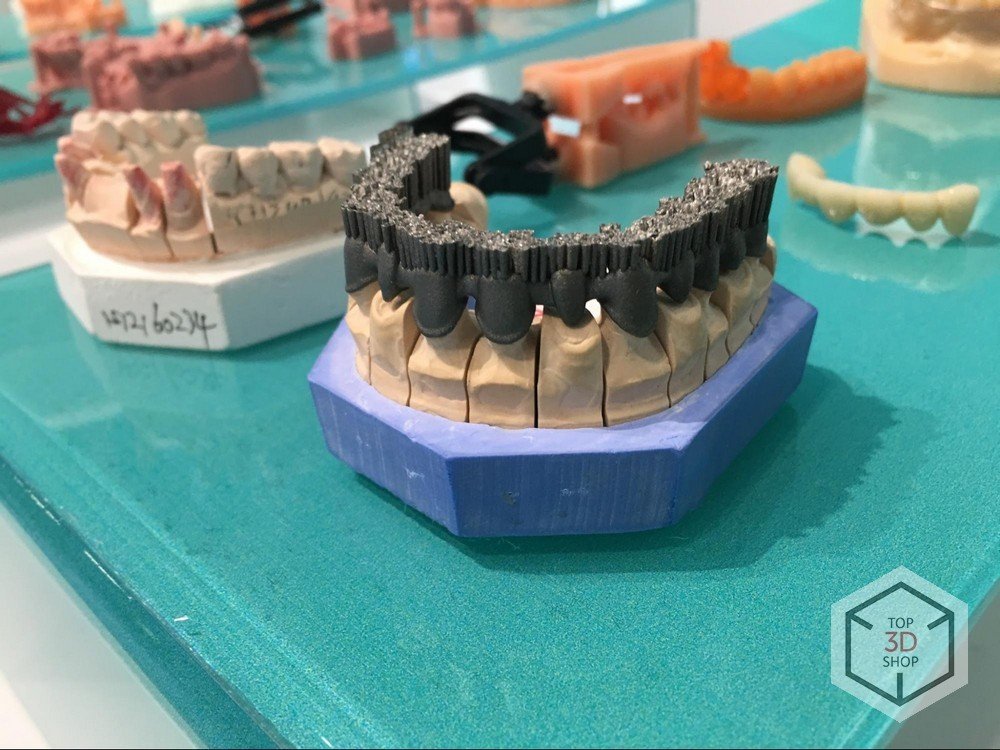
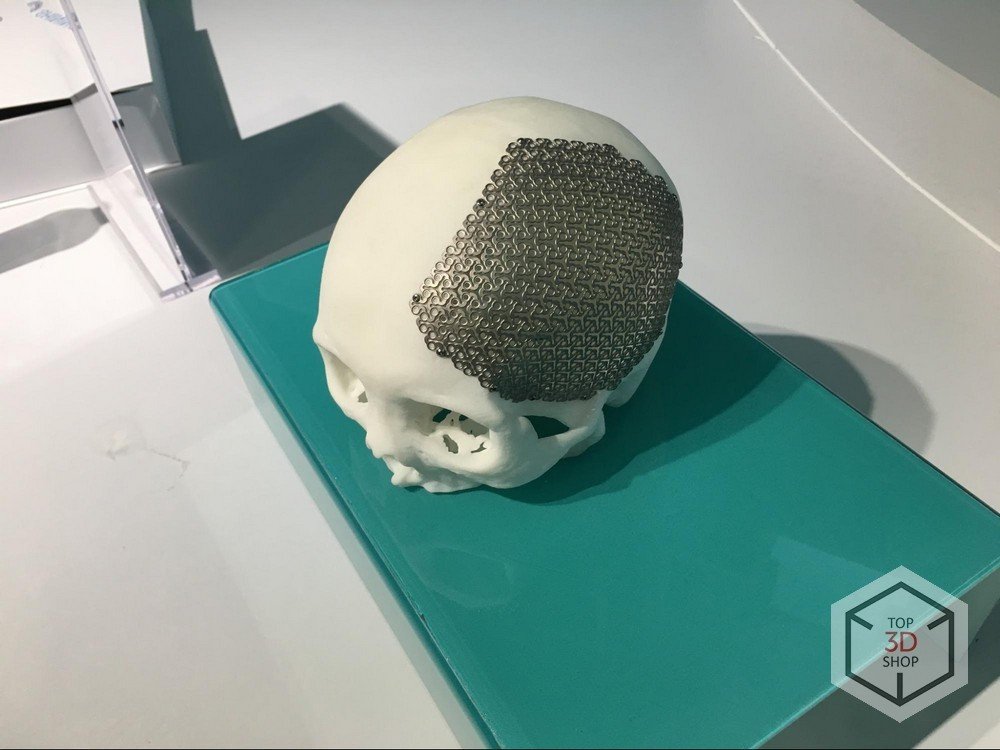
All this demonstrates the possibilities of a wide range of their professional equipment. Among the samples there are marketing models Stratasys – it turned out that Shining 3D are their official dealer in China. This is quite logical, since the company does not manufacture inkjet printers that are similar to PolyJet or MJM, but are well versed in the sales and commissioning of such machines.
The company’s subsidiary is developing a bioprinter, Which is sold only on the domestic market, at an estimated price of $ 70,000
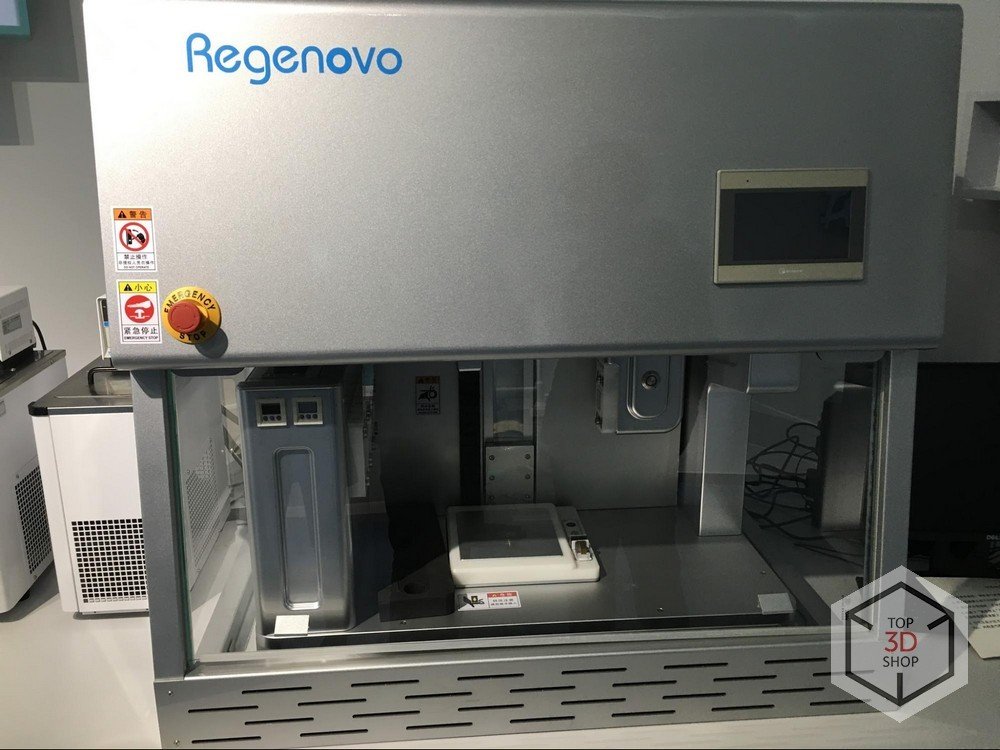
In the next room there is a scanner OptimScan (Chinese name – OKIO).
Integration of the scanner with the robot manipulator from the company FANUC allows to produce automated metrological control at the production and significantly speeds up the scanning of identical parts. To make sure that this is not just a decorative stand, we asked to conduct a presentation and after 15-20 minutes of settings saw the system in operation.
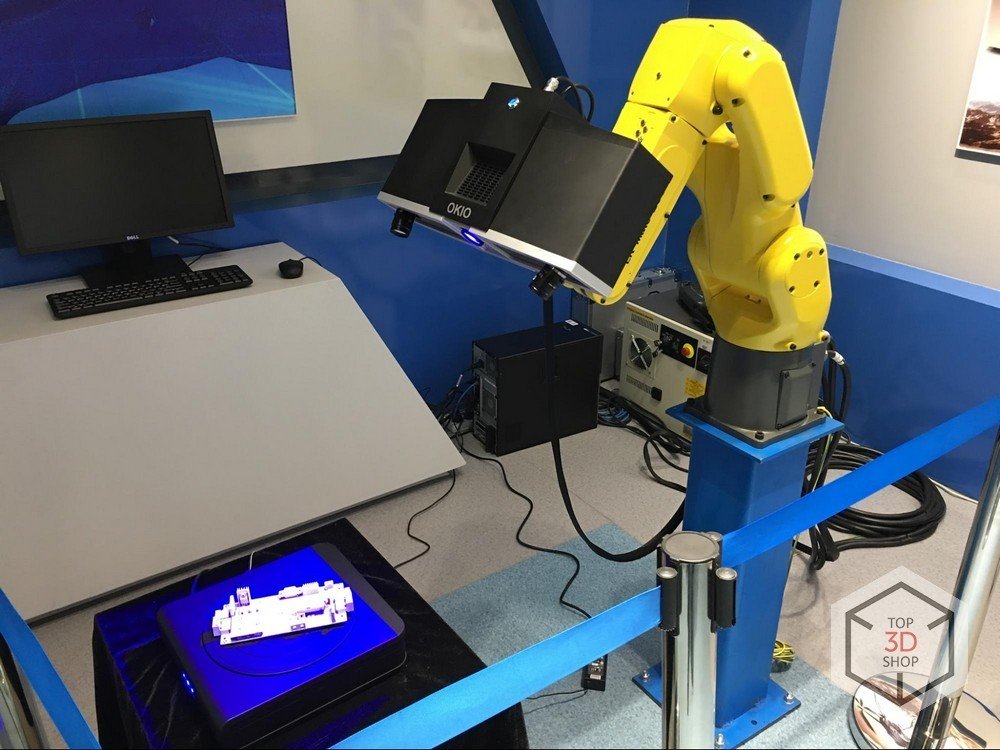
In the same hall, related to industrial production , There are examples of printing industrial 3D printers of the following technologies: SLA, SLS-Nylon, SLS-WAX / Sand and SLM.
The surface quality of the models, in combination with their large dimensions, is very impressive. Shining3D engaged in the provision of services 3D-printing in China. The choice of demonstration samples speaks for an excellent understanding of the production tasks that their equipment is designed to solve at different enterprises.
SLA-printing for prototyping and obtaining an ideally smooth surface without post-processing:

Polyamide seal for rapid prototyping of models with complex geometry:
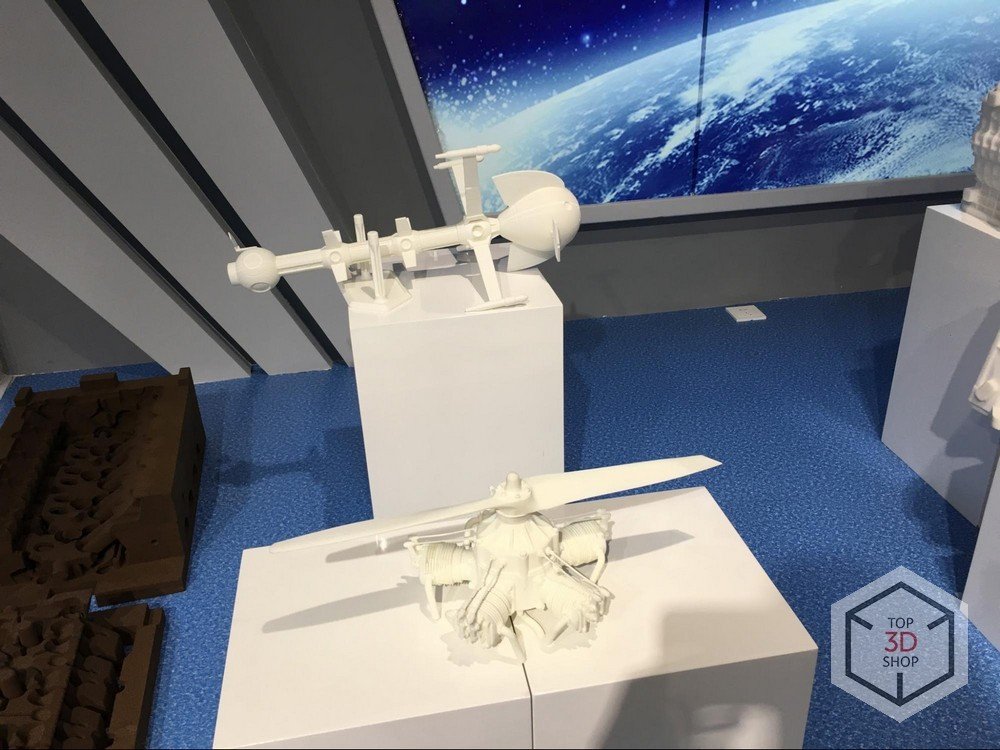
Fusion models and sand molds for casting finished metal products:
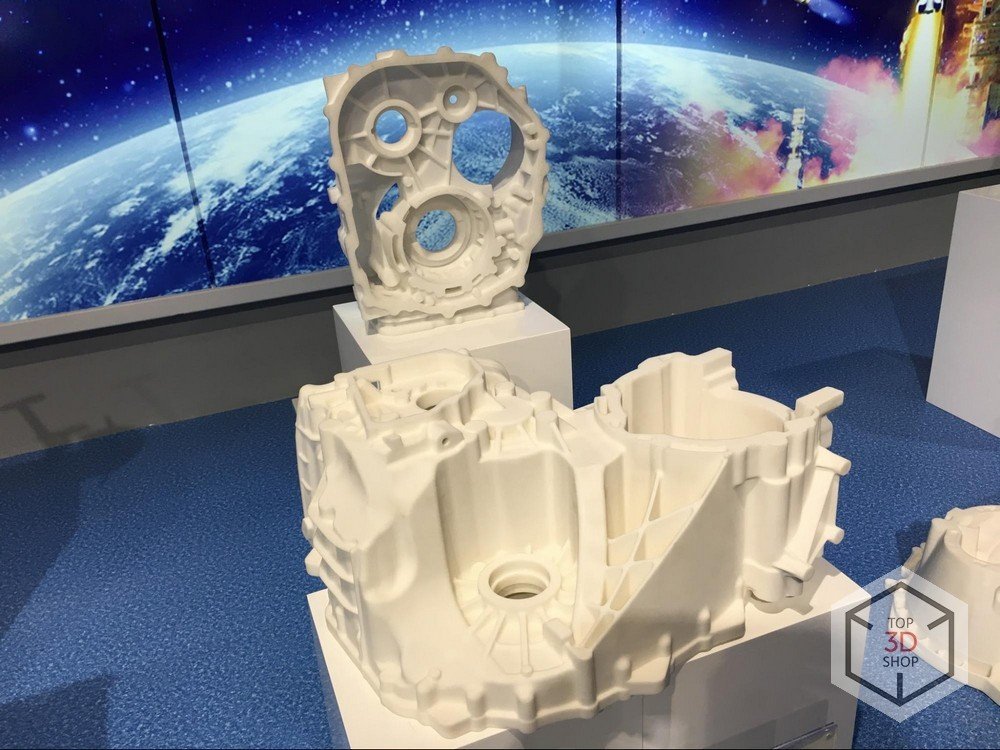
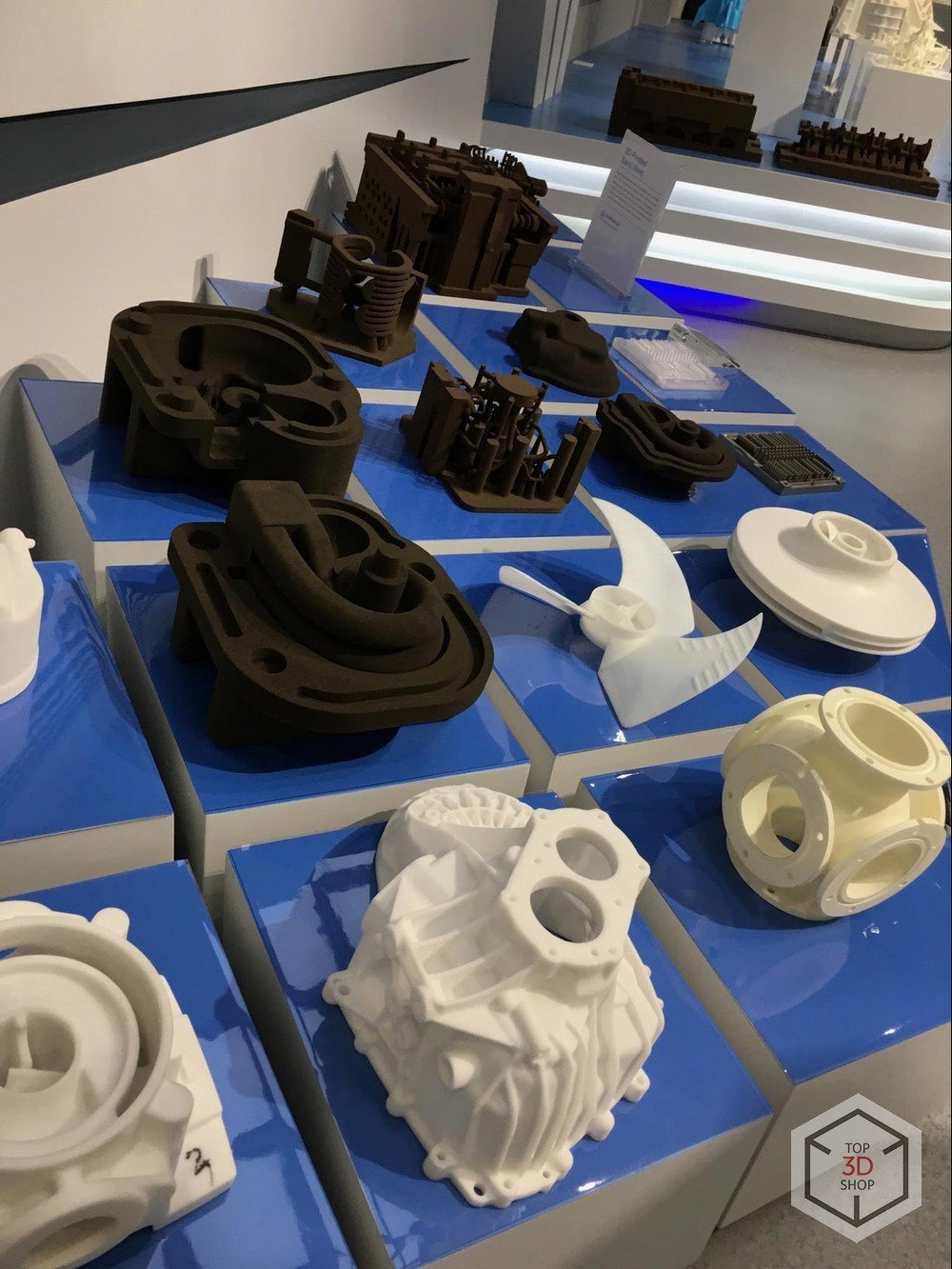
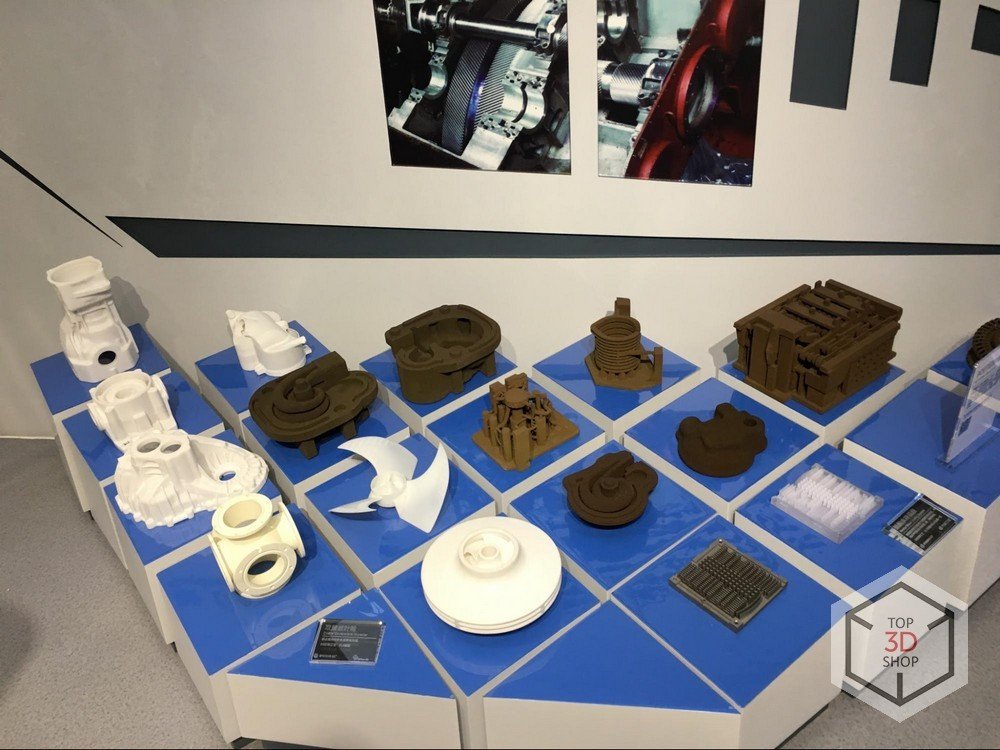
SLM – Expensive But justified printing of turbine blades and lightweight parts with bionic design:
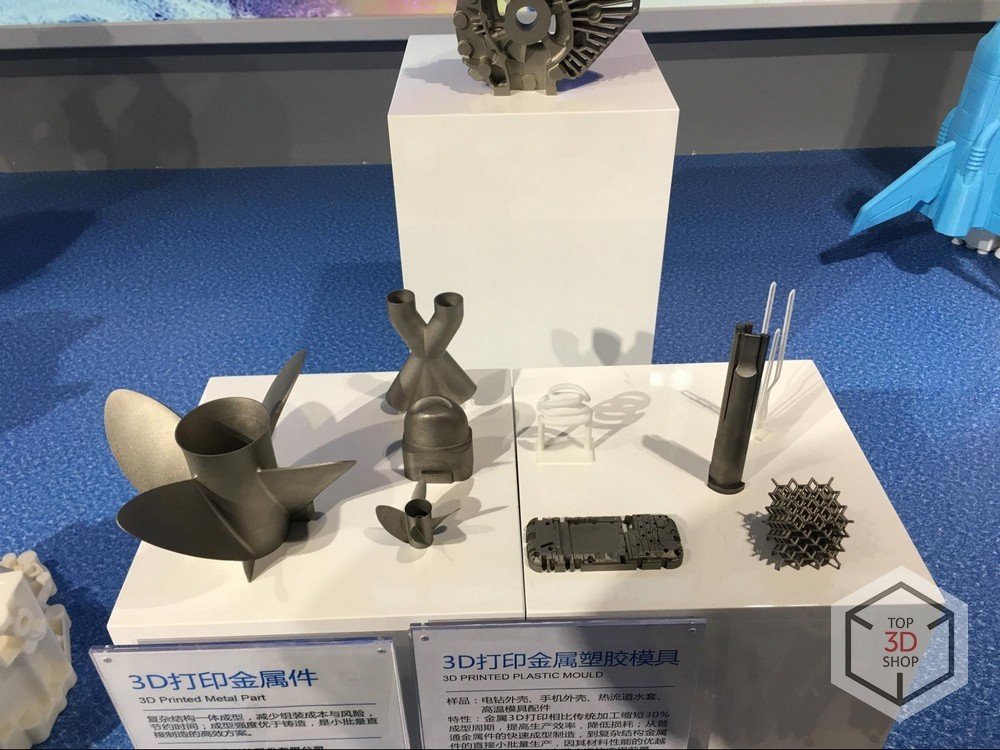
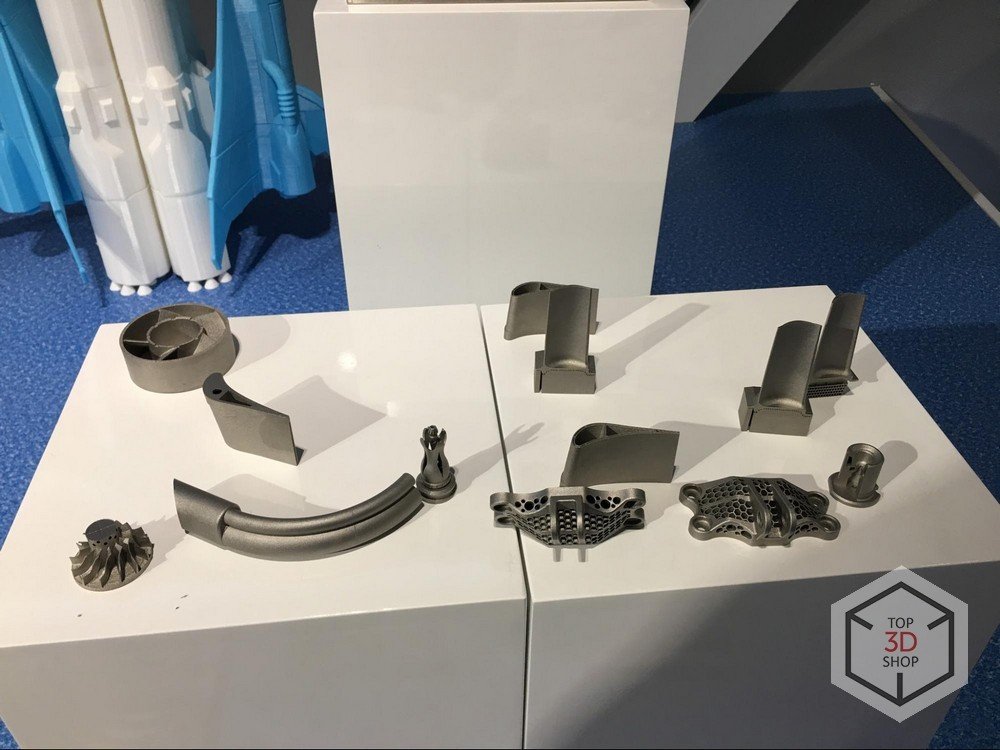
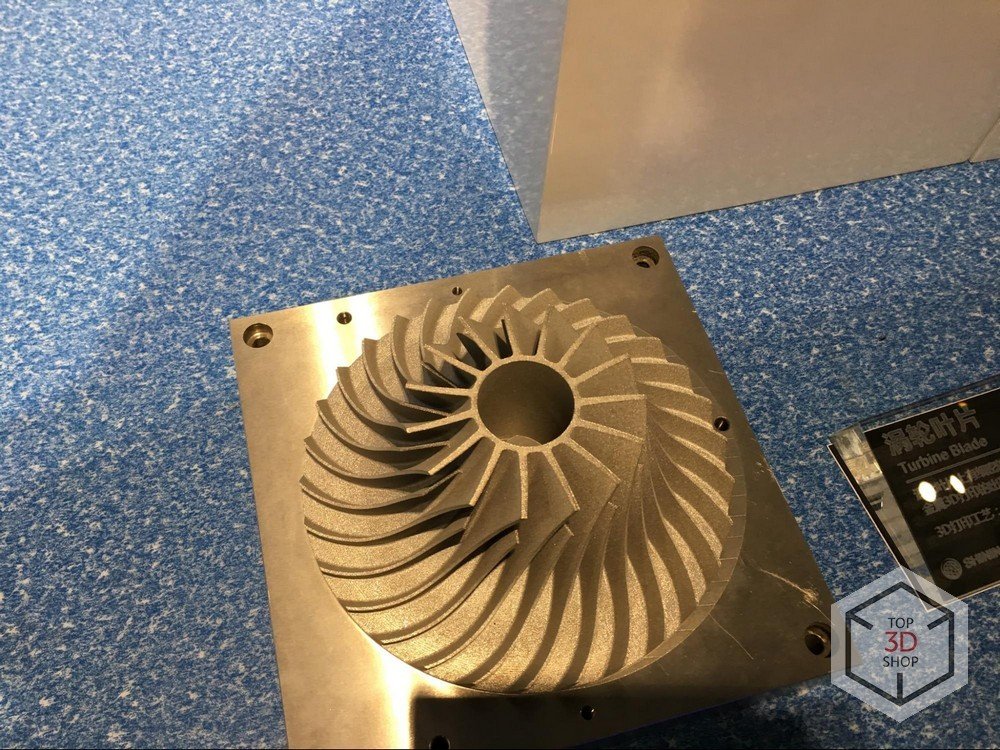
After visiting the show -ma we went to look at the machines themselves and their work.
iSLA-650 Pro (printing area 650mm × 600mm × 400mm, layer thickness – up to 50μm).
SLM EP-M250 (Printable area 250mm * 250mm * 300mm, layer thickness – up to
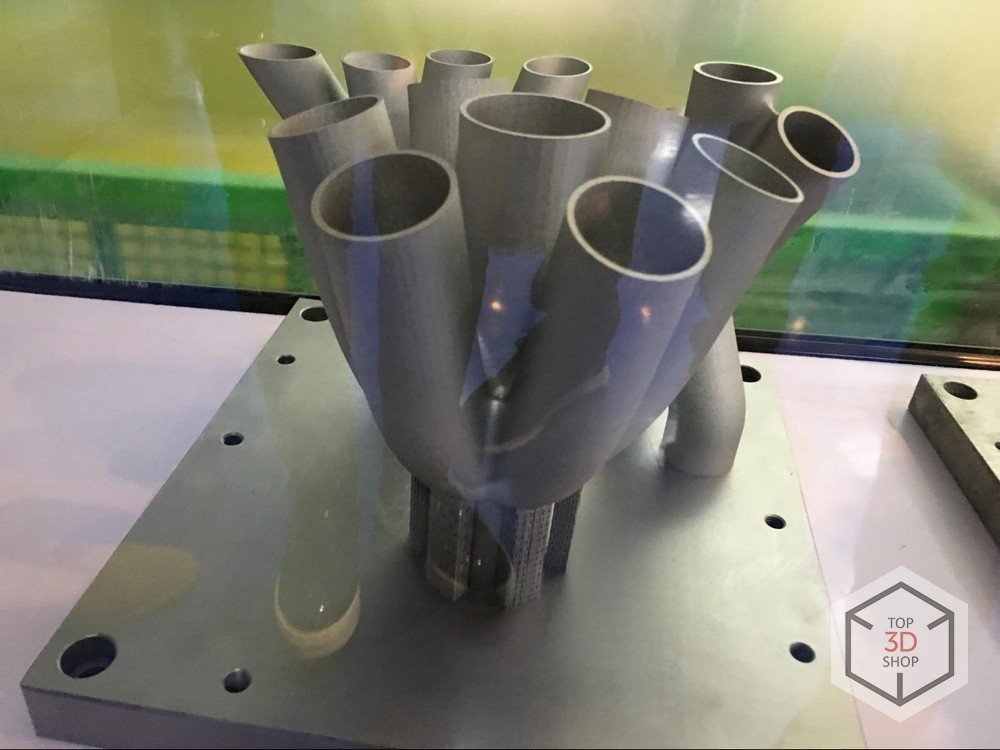
Not far from the office there is another large building in which the company plans to deploy the next production of industrial machines. While only SLA-printers are assembled there, but the building on the square has a great potential and will be able to accommodate the production of their entire line of professional equipment.
In this form, the cars are sent to customers:

Then we looked into the office of new developments, where we saw future novelties, such as the following model of a hand scanner Shining Ein Scan Pro whose predecessor, Ein Scan Pro is already quite popular in Russia.
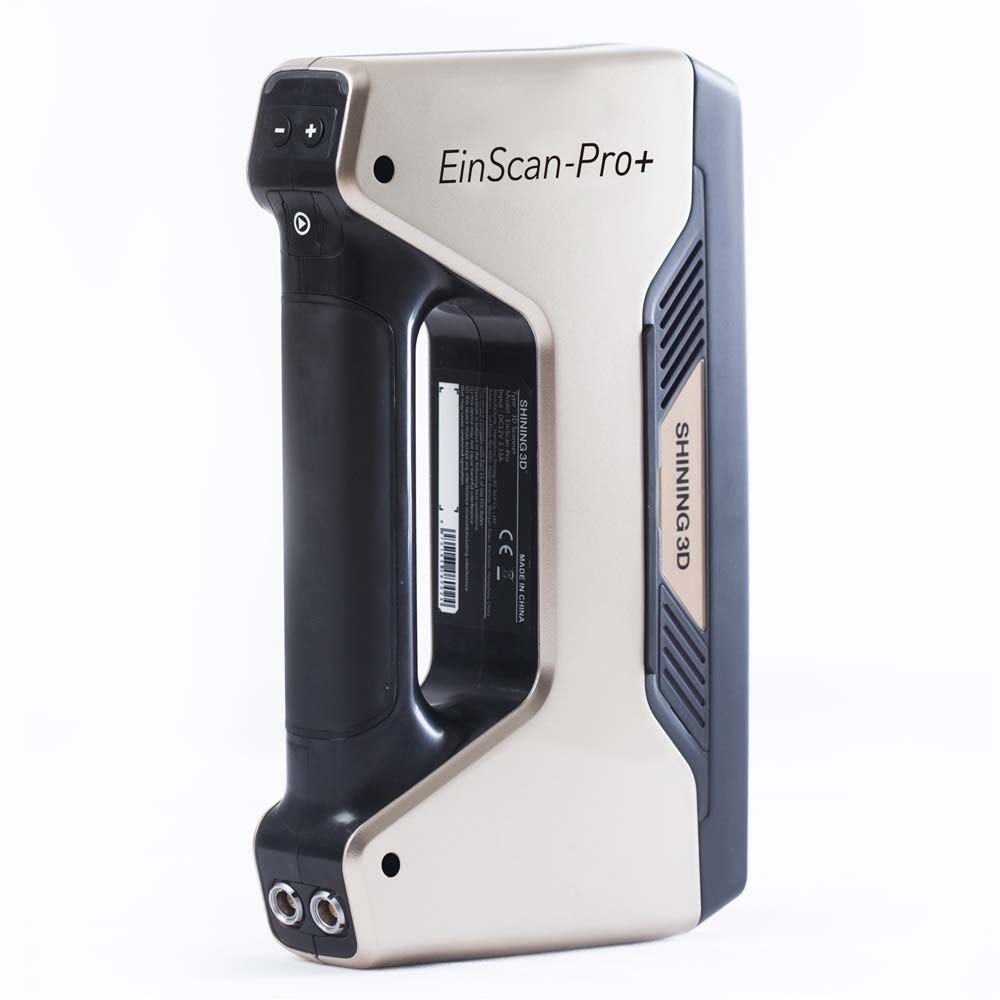
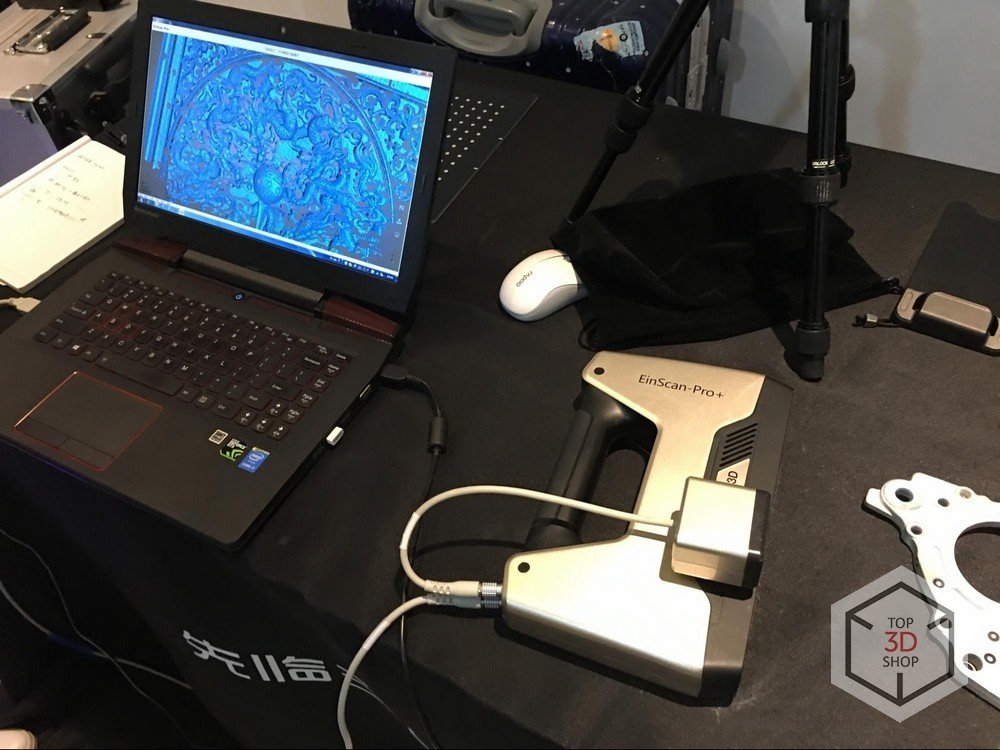
In the same place, some work was done on the metrological scanner. How it works – can be seen on the video:
The prototype of the new office dental printer is the only one of Shining products , Surprised by its high price. The estimated cost of this device is more than $ 10,000, while dentists around the world are already actively using FormLabs Form 2 for $ 5000, and its competitors are constantly releasing new items, knocking down prices.
[1945907]
One of the most anticipated products for us was an intraoral (i.e. intraoral) dental scanner who coped well with scanning the jaw model.
In 40 minutes by taxi, in the same city, is located The most popular and purchased 3D printers are Wanhao.
Wanhao
At the entrance to the office there was a parked wagon and loading of printers took place directly into the container. This is not surprising, as we later found out, because this small but very efficient production ships more than six thousand 3D printers every month.
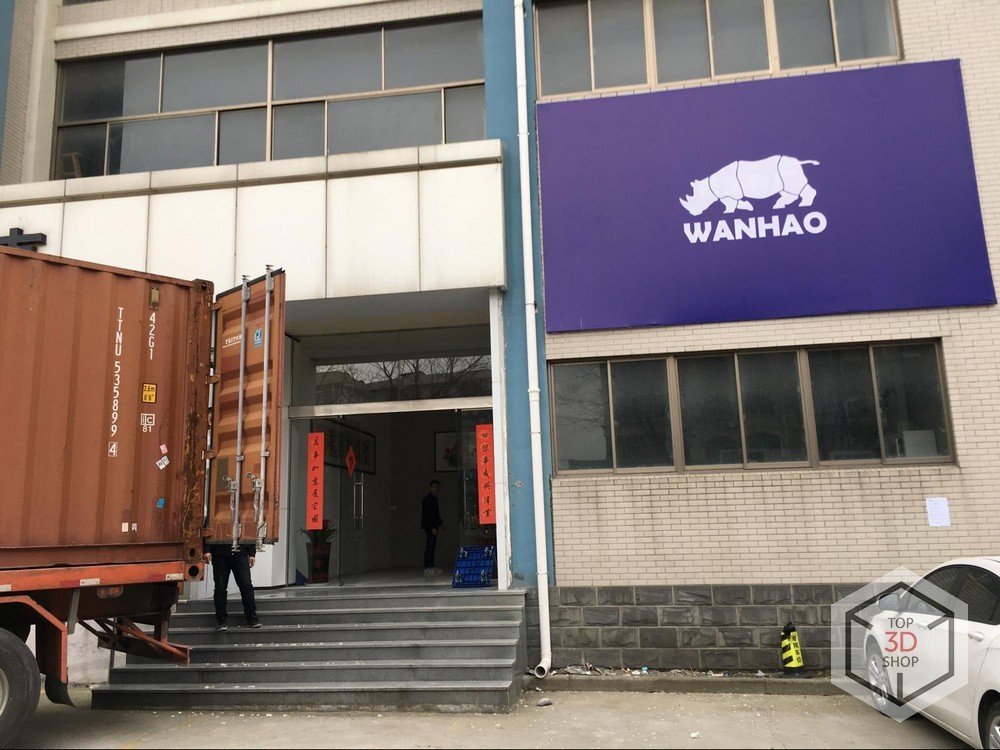
The office is several floors, on the first – A warehouse for all that is needed for assembly. The second is the assembly of the most popular i3 Plus and i3 v2.1 . On the same floor, they are tested and packaged.
On the third floor, the assembly is less massive Wanhao 4s Wanhao 5s Wanhao 6 and new items – DLP printer Wanhao 7 . ]
We offer all this in the format of a video tour:
Assembly and configuration of i3:
The assembly and configuration of other printers:
You, as well as us, are probably interested in looking at examples of printing a DLP printer Wanhao Duplicator 7 [19] 459008].
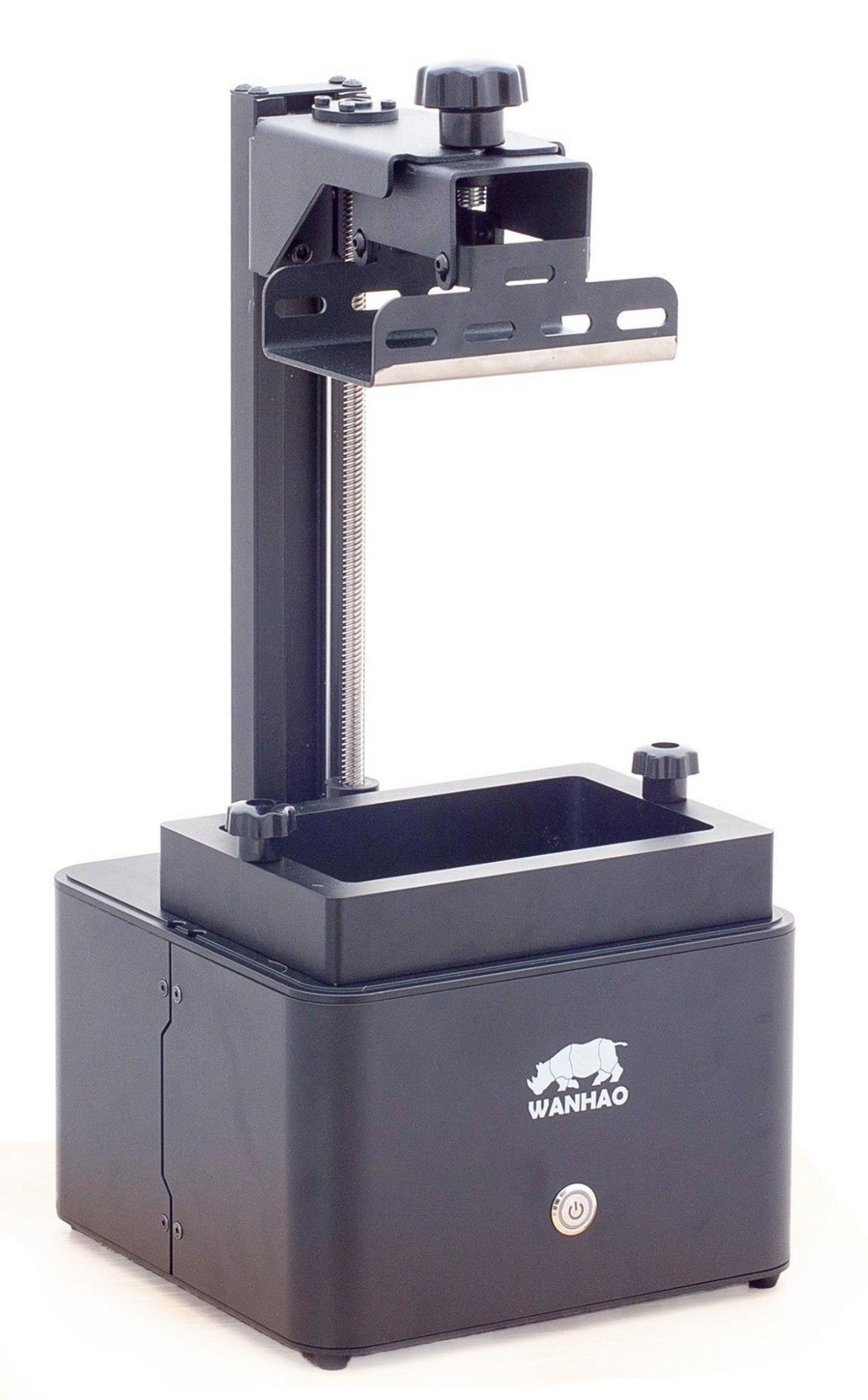
Here are printouts:
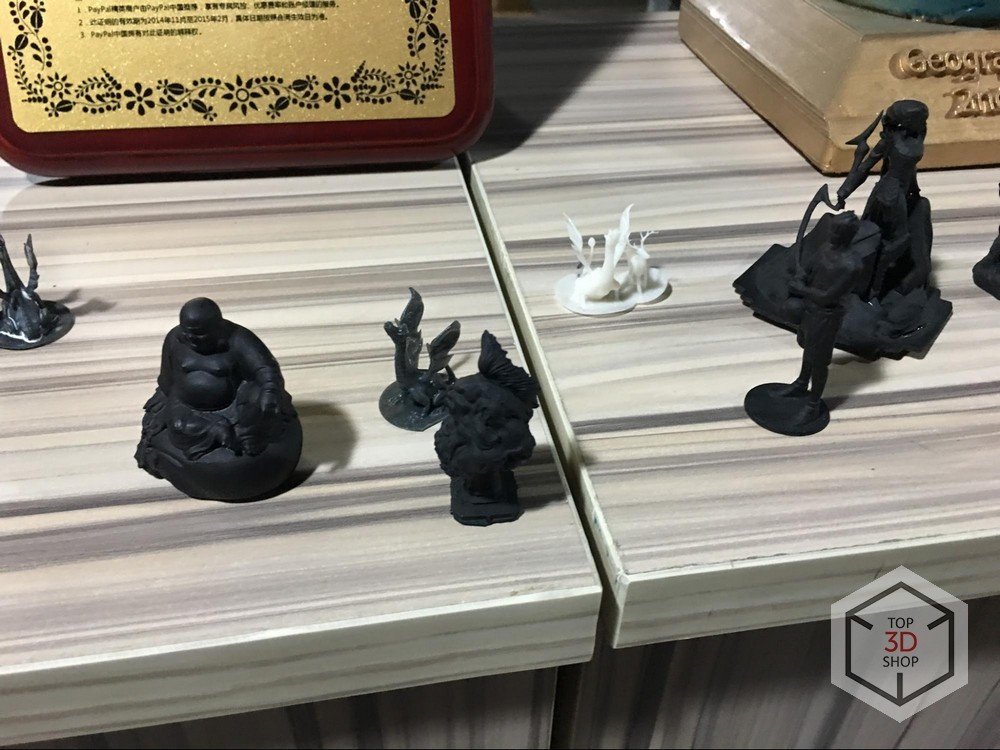
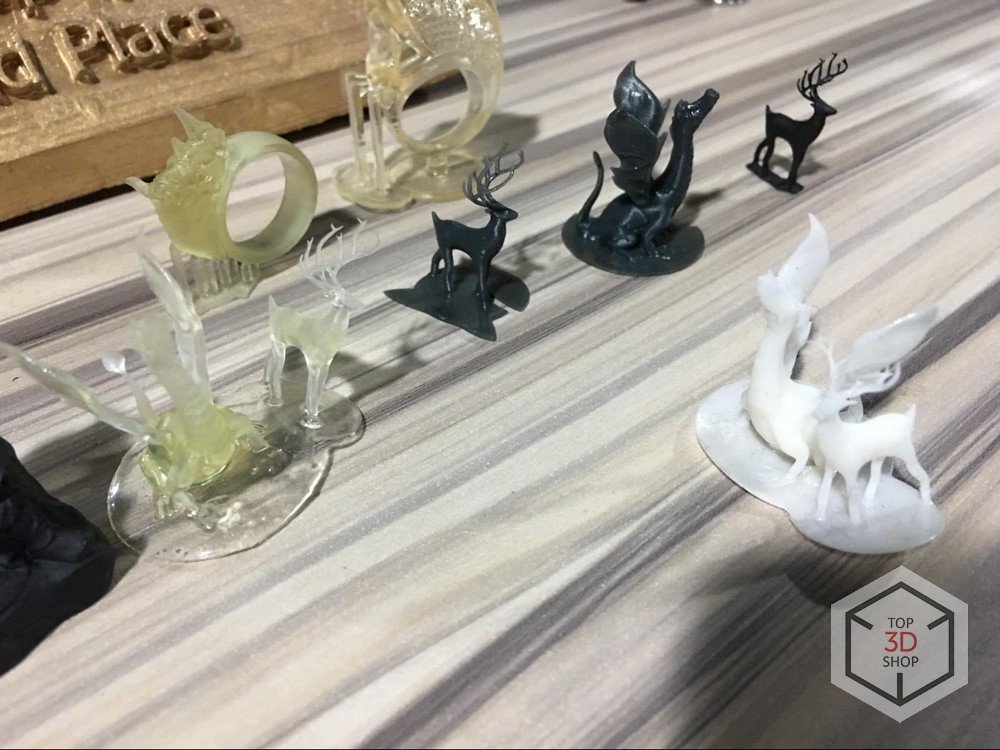
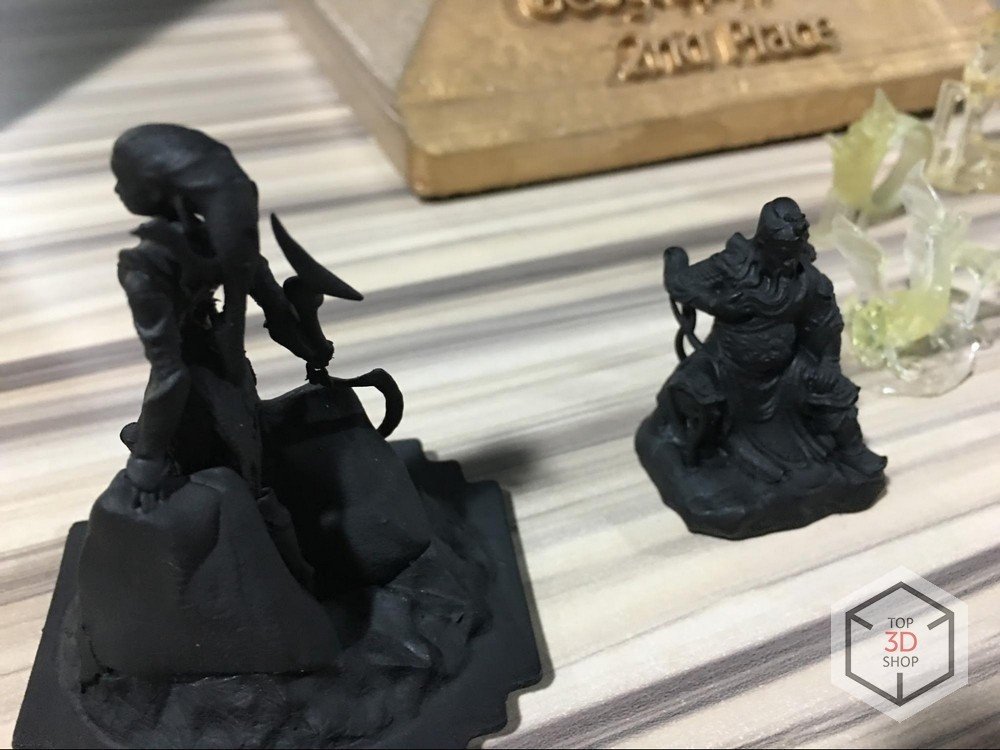
] In a few weeks we will receive a batch of these printers in the warehouse and make a more detailed review of their capabilities.
And now – attention!
Only to the readers of this review we provide a promotional code TopWanhao under which you can get a discount of 1000 rubles for this printer , By pre-ordering our managers.
Leader and founder of Wanhao, Gary Chen, announced to us his ambitious plans – to take the first place in terms of the number of sales of 3D printers in the world. On his way there is only XYZprinting which he intends to get ahead already this year.
In addition, he has a bright goal: to make 3D printing as accessible as possible at all It could be used by every student and beginner.
Conclusions
China is actively developing 3D technologies – He has cultivated quite popular brands in this field, known and in demand both in Russia and all over the world.
Shining 3D company, for example, showing high professionalism and having a solid investment, very soon can squeeze out world leaders such As Stratasys and 3D-system. We hope that this will make industrial 3D print massively available to medium and even small businesses that it will cease to be an exclusive, which is used only by the energy and aerospace industries.
Important point: If you are interested in the mentioned equipment, if you have any questions or need some clarification – please contact our managers are always happy to help. See you in new publications.
Want more interesting news from the world of 3D-technologies?
Subscribe to us in social. Networks:




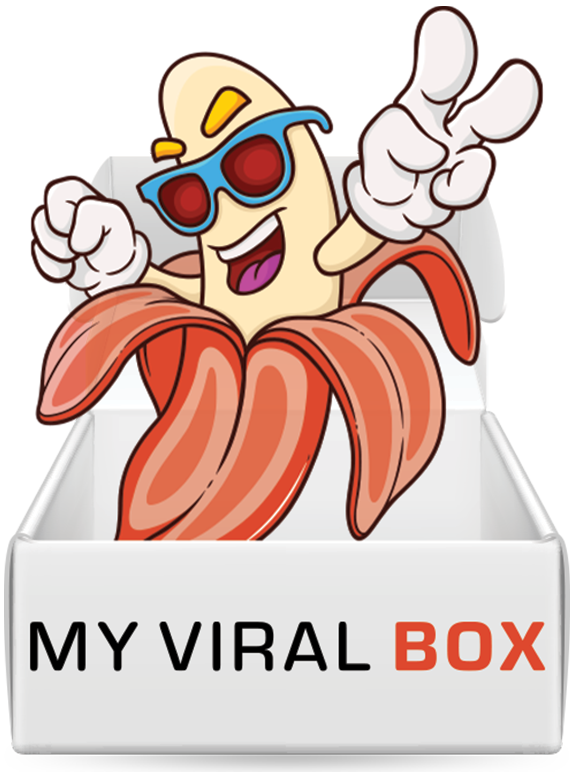

 The Wax / Sand (The printing area is 360mm * 360mm * 500mm, the thickness of the layer is up to 0.08mm)
The Wax / Sand (The printing area is 360mm * 360mm * 500mm, the thickness of the layer is up to 0.08mm)


